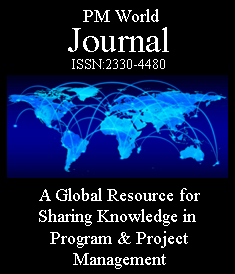Internal vs. External Stakeholders
SECOND EDITION
By Jeremy T. Busby, P.E.
Texas, USA
Abstract
In an ever-changing world, quickly transforming through generative A.I. and more complex operating environments, the role of the project manager must evolve. Descriptions of the role that focuses on scope, schedule, and budget have become inadequate to identify the value that a project manager brings to a project, an organization, or a client.
This paper seeks to promote that the primary focus of the project manager role in today’s world is relationship management – navigating and motivating stakeholders (internal and external) throughout the project’s life cycle and understanding the dynamics between the project manager and the stakeholders, and between the stakeholders themselves.
Relationship management is a skill that today’s project managers must hone to lead the most successful projects. When initiating and planning a project, the project manager must understand how stakeholders interact in organizations that own projects and are working on project teams.
An effective stakeholder analysis sets a project manager and a project up to achieve its goals. Today’s most effective project manager can adeptly identify and evaluate the project’s internal and external stakeholders; modify their communication styles to accommodate different stakeholder viewpoints; and have the cognitive agility to distinguish the types of problems that arise on a project (complex vs. complicated problems).
This paper explores stakeholder types and relationships and presents tools that empower and equip project managers to also be effective relationship managers.
The Role of the Project Manager
There are many definitions of what a project manager and the role they fill throughout the lifecycle of a project. These include job titles and descriptions, such as: goal-oriented, leader, planner, strategist, visionary, the herder of cats. Similarly, there are many definitions of what a project manager should be doing, including developing strategy, planning, schedule and budget control, the primary point-of-contact for a project, the archivist of a project’s history, some sort of technical specialists … the listing could be quite lengthy.
For most laypeople, and especially those professionals and aspirants who are applying for project management positions, the description of the role of the project manager focuses on the three cornerstones of our common understanding of the profession: scope, schedule, and budget. While these elements of a project and a project manager’s focus are extremely important, and they do serve to universally communicate with an ease of understanding the role of a project manager, it is a wholly inadequate description of the role in today’s business environment. It is an inadequate and incomplete definition when considering today’s technological capabilities, with many artificial intelligence (A.I.) tools that can help monitor cost, schedule, and risk items.
More…
To read entire article, click here
Editor’s note: Second Editions are previously published papers that have continued relevance in today’s project management world, or which were originally published in conference proceedings or in a language other than English. Original publication acknowledged; authors retain copyright. This paper was originally presented at the 17th Project Management Symposium at the University of Texas at Dallas in May 2025. It is republished here with permission of the author and conference organizers.
How to cite this paper: Busby, J.T. (2025). Relationship Management: Internal vs. External Stakeholders; Originally presented at the 17th Project Management Symposium at the University of Texas at Dallas in May, republished in the PM World Journal, Vol. XIV, Issue X, October. Available online at https://pmworldlibrary.net/wp-content/uploads/2025/10/pmwj157-Oct2025-Busby-Internal-vs-External-Stakeholders-2nd-ed.pdf
About the Author

Jeremy Busby, P.E.
Texas, USA
![]()
Jeremy Busby, P.E., is an accomplished program manager and Gresham Smith’s Consultancy Services Practice Leader, focusing on program management efforts firmwide for Gresham Smith’s transportation, water, industrial, and vertical architecture markets. Throughout his career, Jeremy has managed a wide variety of programs and projects for DOTs and local municipalities across the nation. Jeremy is strategic, planning how current projects should accommodate future ones, but also planning project management processes for successful delivery of projects via schedule management and control, budget control, and effective risk management.
Following his 12-year career with the Georgia Department of Transportation, Jeremy joined Gresham Smith and was entrusted with managing the safety and operations programs and freight operations and rural development programs for the Georgia DOT, valued at $1 billion. Through those programs, he has evaluated numerous transportation projects, scoping studies, public involvement plans, all while ensuring the schedules and budgets of over 750 projects fall within acceptable limits.
Jeremy is a recognized leader in program management, engaging in speaking opportunities nationwide, and working in partnership with agencies to transform their program delivery. He can be contacted at Jeremy.busby@greshamsmith.com.









